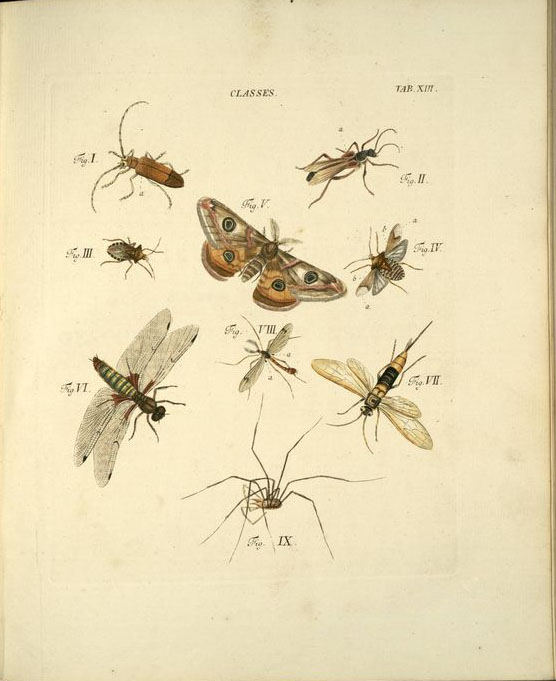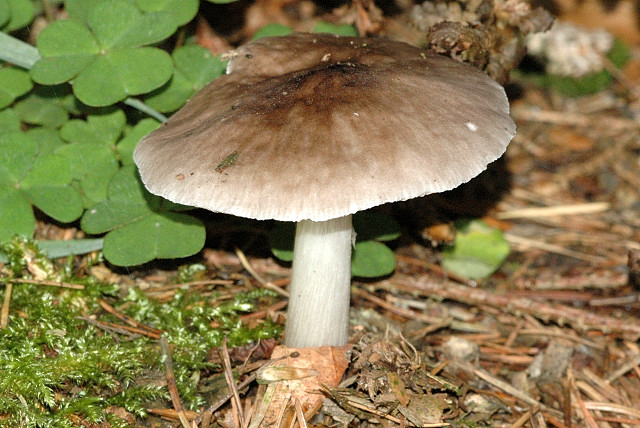|
Pluteus Cervinus
''Pluteus cervinus'', also known as ''Pluteus atricapillus'' and commonly known as the deer shield or the deer or fawn mushroom, is a mushroom that belongs to the large genus ''Pluteus''. It is found on rotten logs, roots and tree stumps and is widely distributed. It can also grow on sawdust and other wood waste. Being very variable in appearance, it has been divided into several varieties or subspecies, some of which are sometimes considered species in their own right. It is edible when young, but considered by some to be of poor quality and is not often collected for the table. Taxonomy The species name, ''cervinus'', although generally thought to refer to the colour of the cap, actually refers to antler-like protrusions on its prominent thick-walled pleurocystidia (of which there can be one to three). Description The cap ranges from in diameter. Initially it is bell-shaped, and often wrinkled when young. Later it expands to a convex shape. The cap can be deer-brown, but ... [...More Info...] [...Related Items...] OR: [Wikipedia] [Google] [Baidu] |
Jacob Christian Schäffer
Jacob Christian Schäffer, alternatively Jakob, (31 May 1718 – 5 January 1790) was a German dean, professor, botanist, mycologist, entomologist, ornithologist and inventor. Biography From 1736 to 1738 he studied Theology at the University of Halle before becoming a teacher in Ratisbon. In 1760, the University of Wittenberg gave him the title of Doctor of Philosophy, and the University of Tübingen awarded him in 1763 the title of Doctor of Divinity. In 1741, he became a pastor of a Protestant parish. In 1779, while still a pastor, he also became the dean of the Protestant parish in Ratisbon. Works In 1759, Schäffer published ''Erleichterte Artzney-Kräuterwissenschaft'', a handbook of botany and the medicinal effects of plants for doctors and pharmacists. From 1762 to 1764, he wrote four richly illustrated volumes on mycology, ''Natürlich ausgemahlten Abbildungen baierischer und pfälzischer Schwämme, welche um Regensburg wachsen''. In 1774, he wrote ''Elementa Ornitholo ... [...More Info...] [...Related Items...] OR: [Wikipedia] [Google] [Baidu] |
Spore Print
300px, Making a spore print of the mushroom ''Volvariella volvacea'' shown in composite: (photo lower half) mushroom cap laid on white and dark paper; (photo upper half) cap removed after 24 hours showing pinkish-tan spore print. A 3.5-centimeter glass slide placed in middle allows for examination of spore characteristics under a microscope. image:spore Print ID.gif, 300px, A printable chart to make a spore print and start identification The spore print is the powdery deposit obtained by allowing spores of a fungal sporocarp (fungi), fruit body to fall onto a surface underneath. It is an important diagnostic character in most handbooks for identifying mushrooms. It shows the colour of the mushroom spores if viewed en masse. Method A spore print is made by placing the spore-producing surface flat on a sheet of dark and white paper or on a sheet of clear, stiff plastic, which facilitates moving the spore print to a darker or lighter surface for improved contrast; for example, it ... [...More Info...] [...Related Items...] OR: [Wikipedia] [Google] [Baidu] |
Fungi Of North America
A fungus ( : fungi or funguses) is any member of the group of eukaryotic organisms that includes microorganisms such as yeasts and molds, as well as the more familiar mushrooms. These organisms are classified as a kingdom, separately from the other eukaryotic kingdoms, which by one traditional classification include Plantae, Animalia, Protozoa, and Chromista. A characteristic that places fungi in a different kingdom from plants, bacteria, and some protists is chitin in their cell walls. Fungi, like animals, are heterotrophs; they acquire their food by absorbing dissolved molecules, typically by secreting digestive enzymes into their environment. Fungi do not photosynthesize. Growth is their means of mobility, except for spores (a few of which are flagellated), which may travel through the air or water. Fungi are the principal decomposers in ecological systems. These and other differences place fungi in a single group of related organisms, named the ''Eumycota'' (''true fungi' ... [...More Info...] [...Related Items...] OR: [Wikipedia] [Google] [Baidu] |
Fungi Of Europe
A fungus (plural, : fungi or funguses) is any member of the group of Eukaryote, eukaryotic organisms that includes microorganisms such as yeasts and Mold (fungus), molds, as well as the more familiar mushrooms. These organisms are classified as a Kingdom (biology), kingdom, separately from the other eukaryotic kingdoms, which by one traditional classification include Plantae, Animalia, Protozoa, and Chromista. A characteristic that places fungi in a different kingdom from plants, bacteria, and some protists is chitin in their cell walls. Fungi, like animals, are heterotrophs; they acquire their food by absorbing dissolved molecules, typically by secreting digestive enzymes into their environment. Fungi do not photosynthesize. Growth is their means of motility, mobility, except for spores (a few of which are flagellated), which may travel through the air or water. Fungi are the principal decomposers in ecological systems. These and other differences place fungi in a single gro ... [...More Info...] [...Related Items...] OR: [Wikipedia] [Google] [Baidu] |
Edible Fungi
Edible mushrooms are the fleshy and edible fruit bodies of several species of macrofungi (fungi which bear fruiting structures that are large enough to be seen with the naked eye). They can appear either below ground (hypogeous) or above ground (epigeous) where they may be picked by hand. Edibility may be defined by criteria that include absence of poisonous effects on humans and desirable taste and aroma. Edible mushrooms are consumed for their nutritional and culinary value. Mushrooms, especially dried shiitake, are sources of umami flavor. Edible mushrooms include many fungal species that are either harvested wild or cultivated. Easily cultivated and common wild mushrooms are often available in markets, and those that are more difficult to obtain (such as the prized truffle, matsutake, and morel) may be collected on a smaller scale by private gatherers. Some preparations may render certain poisonous mushrooms fit for consumption. Before assuming that any wild mushroom is e ... [...More Info...] [...Related Items...] OR: [Wikipedia] [Google] [Baidu] |
List Of Pluteus Species
This is an incomplete list of species in the agaric genus ''Pluteus''. Species of ''Pluteus'' are commonly found growing on woody substrates including stumps, logs, fallen branches, woody debris such as sawdust, and buried wood. Three sections are widely accepted in ''Pluteus'', including ''Pluteus'', ''Hispidoderma'' Fayod, and ''Celluloderma'' Fayod. Section ''Pluteus'' is characterized by fruit bodies with a filamentous cap cuticle (pileipellis) and thick-walled pleurocystidia A cystidium (plural cystidia) is a relatively large cell found on the sporocarp of a basidiomycete (for example, on the surface of a mushroom gill), often between clusters of basidia. Since cystidia have highly varied and distinct shapes that ar .... Section ''Hispidoderma'' consists of species with a filamentous pileipellis and thin-walled pleurocystidia. Section ''Celluloderma'' is defined by a cystoderm pileipellis composed of ellipsoid to saccate-pyriform to vesiculose cells with or without cysti ... [...More Info...] [...Related Items...] OR: [Wikipedia] [Google] [Baidu] |
University Of California Press
The University of California Press, otherwise known as UC Press, is a publishing house associated with the University of California that engages in academic publishing. It was founded in 1893 to publish scholarly and scientific works by faculty of the University of California, established 25 years earlier in 1868, and has been officially headquartered at the university's flagship campus in Berkeley, California, since its inception. As the non-profit publishing arm of the University of California system, the UC Press is fully subsidized by the university and the State of California. A third of its authors are faculty members of the university. The press publishes over 250 new books and almost four dozen multi-issue journals annually, in the humanities, social sciences, and natural sciences, and maintains approximately 4,000 book titles in print. It is also the digital publisher of Collabra and Luminos open access (OA) initiatives. The University of California Press publishes in ... [...More Info...] [...Related Items...] OR: [Wikipedia] [Google] [Baidu] |
Entoloma
''Entoloma'' is a large genus of terrestrial pink-gilled mushrooms, with about 1,000 species. Most have a drab appearance, pink gills which are attached to the stem, a smooth thick cap, and angular spores. Many entolomas are saprobic but some are mycorrhizal. The best-known member of the genus is the livid agaric (''Entoloma sinuatum''), responsible for a number of poisonings over the years in Europe and North America, and '' Entoloma rhodopolium'' in Japan. Some southern hemisphere species such as ''Entoloma rodwayi'' and '' Entoloma viridomarginatum'' from Australia, and ''Entoloma hochstetteri'' from New Zealand, are very colourful, with caps of unusual shades of green and blue-green. Most entolomas are dull shades of olive, brown, or grey. Etymology The part '' ἐντός'' means "within, inside". The part "loma" is a noun-forming element derived from Greek '' λῶμ(α)'', "fringe, hem" and used in the botanical taxonomy for naming plants distinguished by having a fri ... [...More Info...] [...Related Items...] OR: [Wikipedia] [Google] [Baidu] |
Lamella (mycology)
In mycology, a lamella, or gill, is a papery hymenophore rib under the cap of some mushroom species, most often agarics. The gills are used by the mushrooms as a means of spore dispersal, and are important for species identification. The attachment of the gills to the stem is classified based on the shape of the gills when viewed from the side, while color, crowding and the shape of individual gills can also be important features. Additionally, gills can have distinctive microscopic or macroscopic features. For instance, ''Lactarius'' species typically seep latex from their gills. It was originally believed that all gilled fungi were Agaricales, but as fungi were studied in more detail, some gilled species were demonstrated not to be. It is now clear that this is a case of convergent evolution (i.e. gill-like structures evolved separately) rather than being an anatomic feature that evolved only once. The apparent reason that various basidiomycetes have evolved gills is that ... [...More Info...] [...Related Items...] OR: [Wikipedia] [Google] [Baidu] |
Elias Magnus Fries
Elias Magnus Fries (15 August 1794 – 8 February 1878) was a Swedish mycologist and botanist. Career Fries was born at Femsjö (Hylte Municipality), Småland, the son of the pastor there. He attended school in Växjö. He acquired an extensive knowledge of flowering plants from his father. In 1811 Fries entered Lund University where he obtained a doctorate in 1814. In the same year he was appointed an associate professorship in botany. He was elected a member of the Royal Swedish Academy of Sciences, and in 1824, became a full professor. In 1834 he became Borgström professor (Swed. ''Borgströmianska professuren'', a chair endowed by Erik Eriksson Borgström, 1708–1770) in applied economics at Uppsala University. The position was changed to "professor of botany and applied economics" in 1851. He was elected a Foreign Honorary Member of the American Academy of Arts and Sciences in 1849. That year he was also appointed director of the Uppsala University Botanica ... [...More Info...] [...Related Items...] OR: [Wikipedia] [Google] [Baidu] |
Pileus (mycology)
The pileus is the technical name for the cap, or cap-like part, of a basidiocarp or ascocarp (fungal fruiting body) that supports a spore-bearing surface, the hymenium.Moore-Landecker, E: "Fundamentals of the Fungi", page 560. Prentice Hall, 1972. The hymenium (hymenophore) may consist of lamellae, tubes, or teeth, on the underside of the pileus. A pileus is characteristic of agarics, boletes, some polypores, tooth fungi, and some ascomycetes. Classification Pilei can be formed in various shapes, and the shapes can change over the course of the developmental cycle of a fungus. The most familiar pileus shape is hemispherical or ''convex.'' Convex pilei often continue to expand as they mature until they become flat. Many well-known species have a convex pileus, including the button mushroom, various ''Amanita'' species and boletes. Some, such as the parasol mushroom, have distinct bosses or umbos and are described as ''umbonate''. An umbo is a knobby protrusion at the center of th ... [...More Info...] [...Related Items...] OR: [Wikipedia] [Google] [Baidu] |








